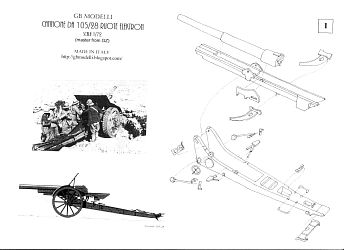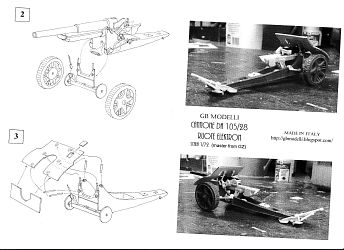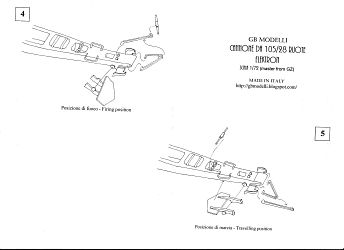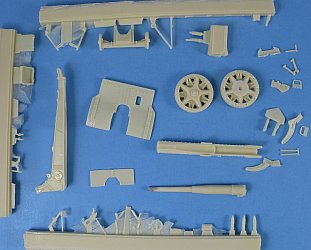|
This gun was originally a French design under the designation of Canon de 105 mle 1913 Schneider where it served with the French until
the end of World War One. At the outbreak of World War One the Italians were allied with Germany, but refused to join them to fight the Allied nations, eventually
joining the Allied side after almost a year later. During this time the Italian firm Ansaldo worked with the French Schneider firm to manufacture the French gun
for Italian use.
Post-war the guns were modernized with the addition of pneumatic tires for
vehicular transport mounted on alloy wheels of electron (a type of ultralight alloy consisting of
magnesium and aluminum). In World War Two it was primarily used in North Africa. Some guns were also used in Russia, Greece, Yugoslavia, and later in within Italy
itself following the Allied invasion.
After the Italian armistice in 1943 it was used by both the RSI and with
the Germans, who designated it the 10.5cm K 338(i).
Following the war examples were retained by the Italians until 1951 when it was struck from service.
The Kit



Instructions are 3 pages of letter sized 8.5x11 inch paper, printed on one side. They use the common exploded diagram to guide the modeller, interspersed with a
photograph of the real gun and a couple of views of the completed model. No decals are supplied nor would one expect any.

Detail of the resin castings for the most part is decent though some detail is soft. For example, the tire tread detail and the rim's spokes are superb
but then the rims edges are a bit
indistinct in places and some of the small holes on the tire's sidewalls have filled in requiring drilling out. In my sample there were a few bubbles and like most
resin kits they were found on edges which makes them more difficult to deal with. In almost every other resin kit I've seen the barrel has
some pin holes and this one was no exception. There was one on the muzzle lip which proved to be annoying (in the parts photo below you can see where
I filled it to see just how much of a nuisance it would be) and another further toward the breach.
All of the tiny parts are delicately cast, and thankfully bubble free. Some would probably be better replaced with wire or plastic rod, such as the shield
supports, to avoid breakage of the resin parts during assembly.
Like most artillery kits, regardless of whether they are injected plastic or resin, the edges of parts such as the shield are rather thick.
I tried sanding some of the edges to see if there were any sub-surface bubbles that would cause problems. Only a few revealed themselves with sanding so I would
expect that subsurface bubbles will not become a irritating game of "Whac-A-Mole".
Conclusion
Overall not a bad effort. Like most resin kits it has it's good points and its bad point. With a little work this will make into an acceptable model of this important gun.
References
[1] Light and Medium Field Artillery WW2 Fact Files, Peter Chamberlain & Terry Gander, MacDonald & Janes, London 1975 ISBN: 0 356 08216 4
[2] wikipedia (Canon de 105 mle 1913 Schneider)
[3] wikipedia (Cannone 105/28 - in Italian)
Preview sample supplied by Georgio Briga of GB Modelli.
Briga (GB Modelli)
products are available at

|